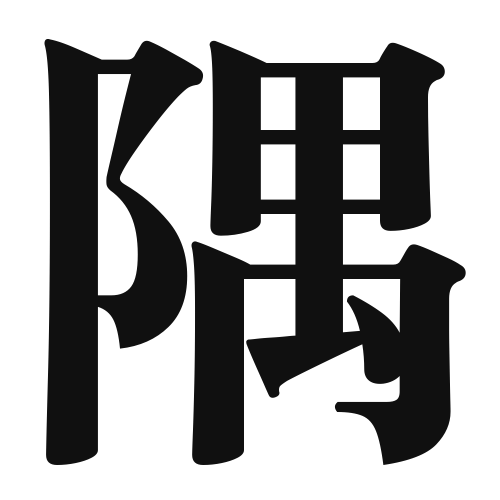1. Overview of Meaning
The kanji “隅” (sumi) means “corner” or “nook.” It refers to the edges or intersections of surfaces, often implying a hidden or less visible area.
2. Formation and Radical
Formation of the Kanji: The kanji “隅” is a compound character (会意文字) that combines the radical for “earth” (土) and the character “隹,” which represents a bird. This combination suggests a place where something might be hidden or tucked away.
Radical: The radical of “隅” is “阜” (which relates to mounds or hills), indicating a connection to land or terrain.
3. Examples of Usage
Common Words and Phrases:
- 隅っこ (sumi-kko) – a small corner or nook
- 部屋の隅 (heya no sumi) – the corner of a room
Example Sentences in Daily Conversation:
- 「本はテーブルの隅に置いてあります。」(The book is placed in the corner of the table.)
- 「隅っこで静かにしている猫を見つけました。」(I found a cat quietly sitting in the corner.)
4. Synonyms and Antonyms
Similar Kanji:
- 角 (kaku) – meaning “angle” or “corner,” but often refers to a sharper or more defined corner compared to “隅.”
Opposite Kanji:
- 中央 (chūō) – meaning “center,” which is the opposite of “corner” or “nook.”
5. Cultural and Historical Background
Connection to Japanese Culture: The concept of “隅” is significant in Japanese aesthetics, where corners in traditional architecture are often designed to create a sense of harmony and balance.
Proverbs and Idioms:
- 「隅に置けない」(sumi ni okenai) – meaning “not to be underestimated,” often used to describe someone who has hidden talents.
